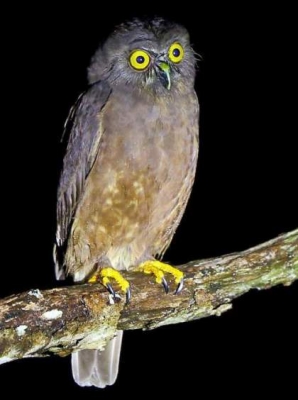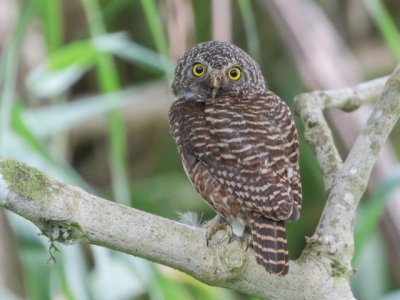What are the peculiarities of Hume’s hawk-owl?

Ninox obscura, called Hume’s hawk-owl or Hume’s boo-book, is a medium-sized bird which belongs to the family Strigidae. It is endemic to the Andaman Islands in India, where it prefers moist lowland forests and mangroves. It also inhabits trees around cultivated fields, urban parks and rubber plantations. This owl has a chocolate brown plumage and a small whitish spot on its forehead between its eyes. Its head is round and its facial disk is ill-defined. Since ear tufts are absent in this species, it tends to look more hawk-like than others. Its underparts are paler than its upperparts and it has a long, banded tail. Its eyes and toes are yellow and its beak is dark and curved. Its legs and feet are covered with dark feathers.
This owl eats large insects, amphibians, lizards, small birds and small mammals. It is a highly nocturnal species and does most of its hunting at night. Its call is a repeated ‘wooooop’ or ‘ooo-uk’. A pair of these birds will form a lasting bond and take care of their young together. The female lays 3 to 5 white eggs in tree holes and is helped by the male to incubate them. These birds are non-migratory and disperse locally within the range after breeding.
This species is listed under the ‘Least Concern’ category in the IUCN Red List, since it is seen commonly within its range and its numbers are assumed to be stable. It faces threats from habitat destruction, human intrusion and trapping by pet traders.
Picture Credit : Google
